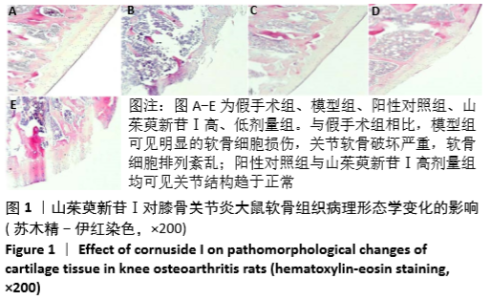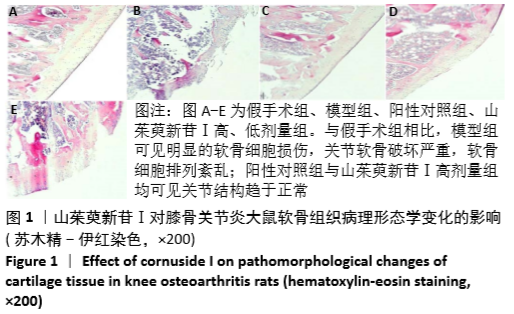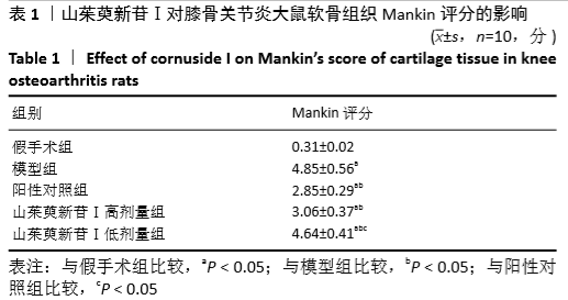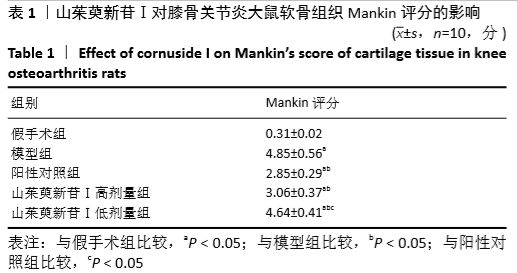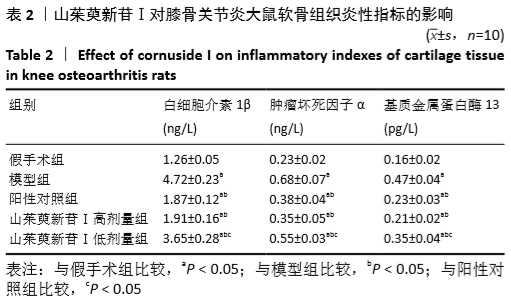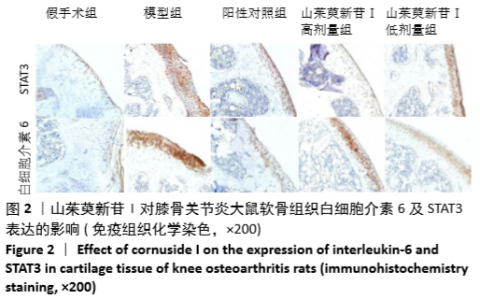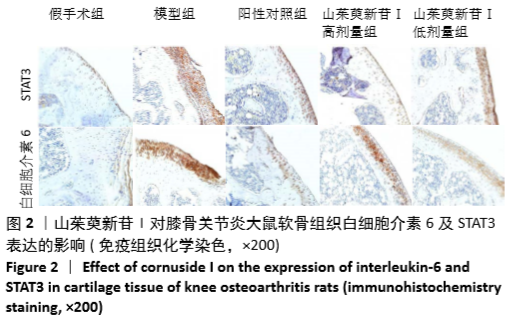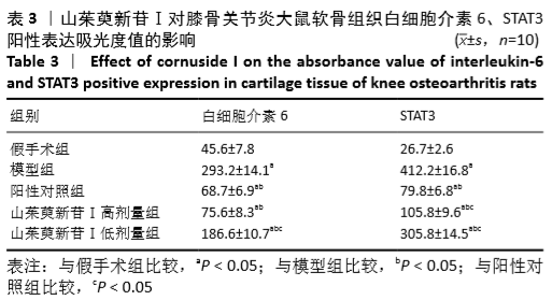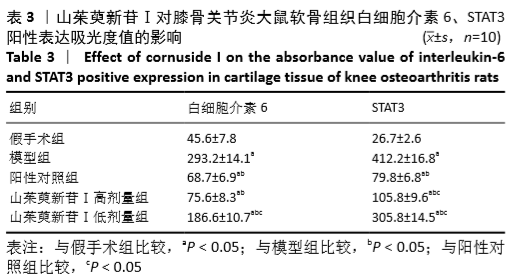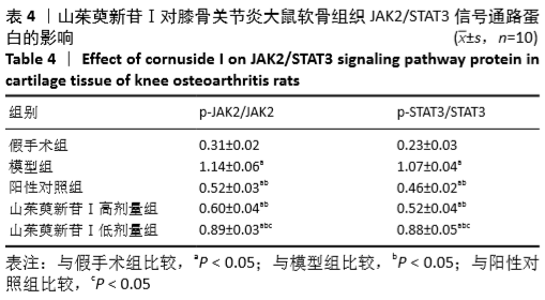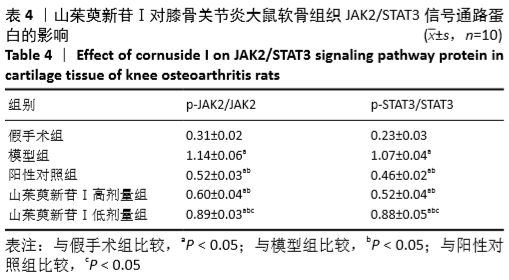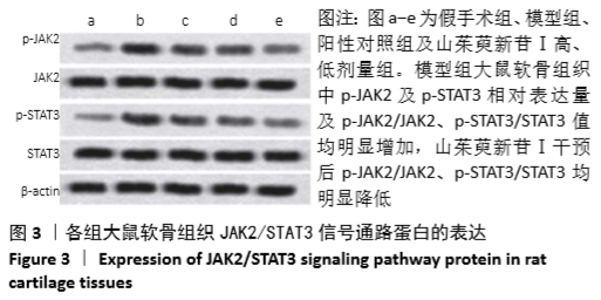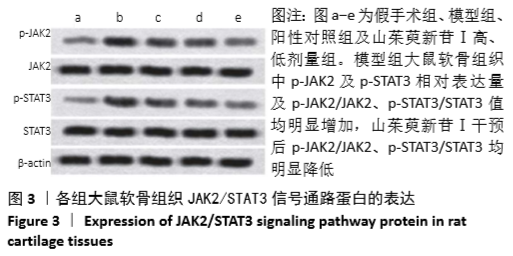[1] 郭珈宜,李峰,范仪铭,等.斜刺经筋法结合运动疗法对膝骨关节炎患者关节功能的影响[J].中华中医药杂志,2019,34(10):4988-4992.
[2] 宋校能,胡玲慧,黄德胜,等.运动防治膝骨关节炎的关键因素及注意事项[J].中国组织工程研究,2020,24(2):289-295.
[3] Giwnewer U, Rubin G, Orbach H, et al. Treatment for osteoarthritis of the knee. Harefuah. 2016;155(7):403-406.
[4] 杨政博,柳椰.独活寄生汤内服联合非甾体抗炎药治疗膝关节骨性关节炎临床疗效及对关节软骨的影响[J].辽宁中医药大学学报, 2019,21(11):218-221.
[5] 钟秋生,夏渭超,郭美珍,等.隔物灸与补肾祛寒方联用治疗膝骨关节炎:随机对照试验[J].中国组织工程研究,2019,23(35):5670-5675.
[6] 韩根利,刘宏胜,王树森,等.RP-HPLC法同时测定山茱萸萜类制剂中莫诺苷、马钱苷、山茱萸新苷、齐墩果酸及熊果酸[J].中草药, 2017,48(24):5168-5173.
[7] Bhakta HK, Park CH, Yokozawa T, et al. Potential anti-cholinesterase and β-site amyloid precursor protein cleaving enzyme 1 inhibitory activities of cornuside and gallotannins from Cornus officinalis fruits. Arch Pharm Res. 2017;40(7):836-853.
[8] 黄佳纯,林燕平,陈桐莹,等.山茱萸新苷Ⅰ对成骨细胞的增殖及成骨分化的影响[J]. 中国骨质疏松杂志: 1-10.[2019-12-25]. http://kns.cnki.net/kcms/detail/11.3701.R.20190723. 1550.004.html.
[9] 曾利红,沈佳炎,方亮,等.川芎嗪联合塞来昔布对早期膝骨关节炎大鼠的影响[J]. 中国临床药理学杂志,2019,35(13):1363-1365.
[10] 安方玉,颜春鲁,张艳霞,等.右归丸对膝骨关节炎大鼠PI3K/Akt/NF-κB信号通路的影响[J].中华骨质疏松和骨矿盐疾病杂志, 2019,12(5):479-487.
[11] 黄立佳,黄杨,孔劲松,等.阿托伐他汀钙经STAT1-caspase-3信号轴抑制膝骨关节炎大鼠关节软骨退变的研究[J].中国临床药理学与治疗学,2018,23(7):743-748.
[12] 谢平金,余翔,柴生颋,等.川芎嗪干预早期膝骨关节炎大鼠软骨Ⅱ型胶原纤维α1基因与血管内皮生长因子mRNA及miR20b的表达[J].中国组织工程研究,2018, 22(12):1846-1851.
[13] 张晓哲,张栋,马玉峰,等.通络止痛凝胶制剂对膝骨关节炎大鼠的影响[J].中华中医药杂志,2019,34(5):2184-2188.
[14] 何强,尹宏,代凤雷,等.膝骨关节炎大鼠滑膜组织中半乳糖凝集素-3变化趋势研究[J].辽宁中医药大学学报,2020,22(2):168-171.
[15] 季鸣,薛妮娜,黄蕊,等. IL-6/JAK/STAT3信号通路抑制剂细胞筛选模型的验证和应用[J].药学学报,2018,53(5):749-753.
[16] 颜春鲁,安方玉,刘永琦,等.右归丸经IL-6/STAT3信号通路对膝骨关节炎模型大鼠软骨组织退变的调控机制[J].中国实验方剂学杂志,2020,26(1):17-23.
[17] 梁辰飞.胆酸通过诱导肠道低度炎性反应激活IL-6/STAT3通路在肠腺瘤癌变中的作用[J].中国老年学杂志,2018,38(4):928-930.
[18] 雷黎,姜辉,刘健,等.五味温通除痹胶囊对佐剂性关节炎大鼠Jak2/Stat3信号通路的调控作用[J].中药药理与临床,2019,35(4):174-178.
[19] 贾羲,苏成福,董诚明.山茱萸提取物抗肿瘤作用及机制探讨[J]. 中国实验方剂学杂志,2016,22(20):117-121.
[20] 王国栋,杨凌云,何斌,等.塞来昔布联合双醋瑞因治疗老年退行性膝骨关节炎的有效性及安全性:随机对照临床试验方案[J].中国组织工程研究,2017,21(36):5747-5751.
[21] Hussain SM, Neilly DW, Baliga S, et al. Knee osteoarthritis: a review of management options. Scott Med J. 2016;61(1):7-16.
[22] 周淑平,王郑钢,向亮,等.阿利吉仑对大鼠膝骨关节炎血清及软骨炎性因子的影响[J].中国矫形外科杂志,2019,27(17):1600-1604.
[23] 许晓伟,王凯.人参多糖联合塞来昔布对骨关节炎大鼠的影响研究[J].中国临床药理学杂志,2020,36(4):437-440.
[24] Ji Q, Xu X, Zhang Q, et al. The IL-1beta/AP-1/miR-30a/ADAMTS-5 axis regulates cartilage matrix degradation in human osteoarthritis. J Mol Med (Berl). 2016;94(7):771-785.
[25] Liu S, Cao C, Zhang Y, et al. PI3K/Akt inhibitor partly decreases TNF-alpha-induced activation of fibroblast-like synoviocytes in osteoarthritis. J Orthop Surg Res. 2019;14(1):425.
[26] 霍秀红,孔丽娅,刘晓谷,等.桂枝提取物对AS大鼠IL-6/STAT3信号通路的影响分析[J].中华中医药杂志,2015,30(5):1788-1792.
[27] Liu Y, Zhang J, Zhou YH, et al. Activation of the IL-6/JAK2/STAT3 pathway induces plasma cell mastitis in mice. Cytokine. 2018;110:150-158.
[28] Shati AA, El-Kott AF. Acylated ghrelin prevents doxorubicin-induced cardiac intrinsic cell death and fibrosis in rats by restoring IL-6/JAK2/STAT3 signaling pathway and inhibition of STAT1. Naunyn Schmiedebergs Arch Pharmacol. 2019;392(9):1151-1168.
[29] 汪永忠,邓龙飞,韩燕全,等.威灵仙总皂苷对佐剂性关节炎(AA)大鼠IL-6、IL-10及滑膜中p-JAK2、p-STAT3表达的影响[J].中药药理与临床,2015,31(1):86-90.
|
